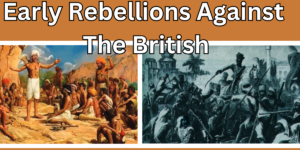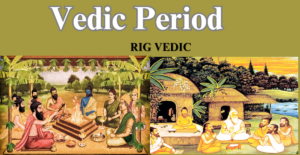Administration of Delhi Sultanate
Administration :
Administration of Delhi Sultanate,The Sultanat was considered a legitimate Islamic state.As the head of the army, the commander of the army was the sultan.He is also the Supreme Court as he is the head of financial management.Balban said that he ruled “as the representative of God on earth”.They did good things that were not for the welfare of the people.The Delhi Sultanate had the qualities to be considered as an all-India empire. Since there were no rules of succession, there was a lot of competition for succession during the Sultanat period.
The Sultans kept certain areas (khalissa) under their direct control.The officers and soldiers of the own armies of the sultans were paid from the revenue collected by these areas.The financial resources kept increasing in proportion to the expansion of the territories.Taxes were also imposed The subsequent collection of taxes led to a bitter peasant revolt at the Do of Khil (1332–34) near Delhi.The Delhi Sultanate from 1206 to 1526 marked a significant period in Indian history. Beyond success and political manipulation, it witnessed a vibrant socio-economic and cultural landscape. Let’s explore the main features of this era:
Delhi Sultanate Officials:
| Position | Responsibility | Explanation |
| Sultan | – ruler | -Leader with absolute powers, administration with the help of various ministers. |
| Wazir | – premier | Financial supervision. |
| Diwan-i-Org | – Military Department | -Regiments, Wages Administration. |
| Diwan-i-Risalat | – Department of Religious Affairs | -Monitoring Religious Affairs. |
| Amir-e-Majlis-Shahi | – Festivals and Public Programmes Department | -Arrangements of festivals and public events. |
| Diwan-i-Insha | Department of Local Letters | -Supervision of correspondence of local offices. |
| Aris-e-Mumalik | – Commander (Paying Officer) | -Administration and payment of salaries to soldiers. |
| Sultan & Qazi-e-Mumalik | – Heads of Justice | – Legal system, Sharia law for Muslims, separate laws for other religions. |
| Iqta | -Regions | -Regional leaders (Mukkudis) are responsible for law and order, revenue collection. |
| Shiq-tar | -Presidents of Sub-Provinces | -Security, resistance to landlord oppression, military services. |
| Pargana | -Small sections | -Special Officers Administration. |
Delhi Sultanate Economy:
Agriculture formed the backbone of the economy and land revenue was the primary source of income for the Sultans. The lands were classified as iqta (assigned to officials), khalisa (directly under the sultan), and inam (given to religious institutions). Peasants paid a large share of their produce, sometimes exceeding one-third, and burdened additional taxes.However, rulers like Muhammad and Firoz Tughlaq introduced measures such as irrigation facilities and crop diversification to increase agricultural production.
Cities like Delhi, Lahore and Multan flourished during the Sultanate period.This stimulated trade abroad (along with West Asia and Southeast Asia) and at home (dominated by Gujarati, Marwari and Bohra merchants). The sultans facilitated trade by constructing roads and rest houses, promoting a thriving business network.Textiles (silk and cotton), paper manufacturing, carpet weaving, and metalworking are some of the major industries.The royal karkhanas produced extravaganous items for the Sultan and his court, displaying skilled craftsmanship.Different rulers issued different types of tanks, dinars and jitals, and coins also flourished.
Delhi Sultanate Type of Taxes :
| Tax Type | Explanation |
| Ucher | -Muslims – 10% tax on agricultural produce |
| Garage | -Non-Muslims – 10% tax on agricultural produce |
| Jizya | -A tax on non-Muslims living under Islamic rule |
| Zakat | -Religious Contribution of Muslims |
| Khamas | -20% Tax on Property Captured in War |
Delhi Sultanate society:
Though largely unchanged, the Hindu social hierarchy further emphasized the superiority of Brahmins and strict limitations in interacting with the lower castes.The practice of seclusion and veil (purdah) for women, adopted by Arabs and Turks, gained prominence among upper class Hindus.Although distinct with ethnic and ethnic divisions (Afghans, Iranians, Turks), the Muslim community faced internal hierarchies that discriminated against converts from lower Hindu castes.
Hindus jhimmis (protected people) were classified as subject to a tax called jaziya.Initially combined with land revenue, Firoz Tughlaq made it a separate tax, levying it even from Brahmins who were previously exempt.Slavery, which existed before the Sultanate, flourished during this period with exclusive markets for men and women.
Delhi Sultanate Religion:
The Delhi Sultanate introduced Islam, a monotheistic religion to India, where Hinduism, with its many gods, was the dominant faith.Although Islam was vastly different from various practices of Hinduism, there were some similarities. For example, both religions emphasize the adherence to specific beliefs and practices.Alberuni, a scholar, noted that the Bhagavad Gita, a Hindu sect, had beliefs similar to Islamic tenets.The Lingayat sect in Karnataka, founded by Basavanna, believed in one God and rejected caste divisions, empowered women and challenged the authority of Brahmins.
Similarly, the Siddhas in Tamil Nadu worshipped one God and questioned the caste system and concepts of rebirth from orthodox Hinduism.Other figures such as Namdeva from Maharashtra also advocated against idolatry and caste discrimination, expressing a shift within Hinduism.Despite the uniqueness of Islam, these developments point to an interesting interplay of religious ideas during the Delhi Sultanate.
Art and Architecture:
- The architectural landscape bore the imprint of Islamic and Indian influences.
- Domes, arches, minarets, and Islamic characters characterize structures such as mosques, which contrast with the shikharas of Hindu temples.
- The Qutb Minar, the highest testimony of Qutb-ud-din Aibak and Iltutmish, is a prime example.
- The Tughlakabad Palace complex, the Firoz Shah Kotla Fort and Hauz Khas, a pleasure resort, are other notable remains of the era.
- Delhi or Imperial style (Qutub Minar), provincial style (dargah of Hazrat Nizam-ud-din Auliya), and Hindu architectural style intermingled and influenced throughout the reign of the Sultanate.
Music and Literature:
New musical instruments such as sarangi and rabab, along with ragas such as kora and sanam, were introduced by the maestro Amir Khusrau, who created qawwali, mixing Iranian and Indian styles.He invented the sitar and also contributed to the translation of the Indian classical music work Ragadarpan.The Sultans played an important role in promoting literature, especially Persian writingsPoetry, theology, and historiography flourished.Famous historians like Minhaj-uz-Siraj and Zia-ud-Din Barani made the history of the era.
Amir Khusrau, who is revered as the “Parrot of India”, left an indelible mark on Persian poetry with his “Chhabaq-e-Hind” His works such as Kazain-ul-Fbud, Tughlaqnama and Tarikh-i-Alai, and translations of Sanskrit epics and stories enriched the literary landscape.The Persian translation of Sanskrit gained momentum, and Al-Beruni’s Kitab ul-Hind provided valuable insights into the socio-economic conditions of India.Regional languages also saw growth, such as Chand Bardai’s Prithviraj Razau in Hindi and Nusrat Shah’s support for a Bengali translation of the Mahabharata.




